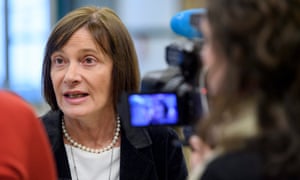For all the benefits to mental health a digital world can bring, such as a sense of belonging and information and support for those with problems, there are also myriad dangers associated with online activity. In the very worst cases, people have live-streamed their suicide and had people cheer them on in the comments section.
Meanwhile, cyberbullying and trolling, along with communities and groups on social media that foster, glamorise or even encourage self-harm are pervasive. Stephen Buckley, head of information at the charity Mind, acknowledges these risks: “It is vital to recognise the huge danger created by any site or social media trend that promotes self-harm, suicide or eating disorders. They can be hugely damaging and possibly dangerous to someone in a crisis.”
This has come to the forefront over the past decade as more and more children use smartphones and tablets. A Young Minds report, Resilience For the Digital World, says half of Europe’s nine- to 16-year-olds now own a smartphone; the vast majority go online at least once a week, and most daily.
Buckley says that people are now used to following their friends on social media and sharing news of a new job, relationship, or a holiday presented in the best possible light. But this can have an impact on individual self-esteem. “While low self-esteem is not a mental health problem in itself, the two are closely linked. If lots of things are affecting your self-esteem for a long time, this may lead to depression or anxiety,” says Buckley.
Pressure on young people may also come from situations where they are being bullied in daily life that then cross over into their digital lives, says Marc Bush, chief policy adviser at Young Minds. “For instance, victimisation in the school playground is replicated on their Facebook pages or their WhatsApp or Snapchat groups, so they relive the distress they’re experiencing in real life on the digital platform.”
So, what’s to be done? Bush says industry has an important role to play. Today, if you search certain hashtags on Instagram, for example, a helpline pops up. He also cites the report from the House of Lords communication committee, Growing Up With the Internet, which calls for a national digital champion who can look at the rights of young people online, educate parents and teachers on how to look out for warning signs, and support young people to understand the consequences of bullying someone online.
The greater part of the solution, though, lies with young people themselves. “Ultimately,” says Bush, “young people are active in the creation, consumption and distribution of these images or forms of behaviour, so they have to be part of the solution.”
Tamanna Miah: ‘I developed severe anxiety after being bullied online.’

Tamanna Miah, 23, is a campaigner and public speaker from Kent. She describes how she coped with being bullied on social media and what it has been like to grow up in a digital world.
“I grew up in Sevenoaks, Kent, which is a very conservative, middle-class area. I suffered from severe bullying and racism from primary school to my all-girls secondary school until university. When I went home, the abuse continued online. It happened on my social media networks – Facebook, Bebo and MSN. People would comment on photos, status updates, anything that I was doing. Sometimes it was racist or Islamophobic, or attacking my appearance or the way I acted – anything. People would find a fault and take advantage of the situation.
I was a very shy, quiet child, I couldn’t stand up for myself, or look people in the eye. I would be bullied at school, come home and log on to the laptop and it would continue. You wake up in the morning to check again and it’s never-ending torment and hate. I couldn’t escape. I hated school and my time in education. I was never happy.
I developed severe anxiety and depression as a result. I tried to get support from my school and was unsuccessful. I visited my GP and they dismissed me and didn’t take me seriously. They said nothing was wrong and told me to do some exercise. It wasn’t until university that I was diagnosed.
Now I try and be careful when using social media, but I also use it for networking and meeting people. I’ve been through bullying online and offline, but I’ve also had a wealth of opportunities through social media.
I make sure that my personal activity, photos and comments are restricted, to avoid anyone attacking me publicly or harassing me. I don’t want to experience more abuse so I’d rather keep personal things private. I’d say to others in similar situations to always be careful about what you post and where.
Your online life is always going to be present. Google yourself to see what’s out there so you can check your settings and change them if needed. If someone is bullying you, always tell a responsible person as soon as possible. Make sure you have evidence of everything. Take screenshots or make audio recordings.
Whatever happens, don’t give up – just keep going. We absolutely need to speak about these issues, because if we don’t, who will?”
Social media and bullying: how to keep young people safe online

